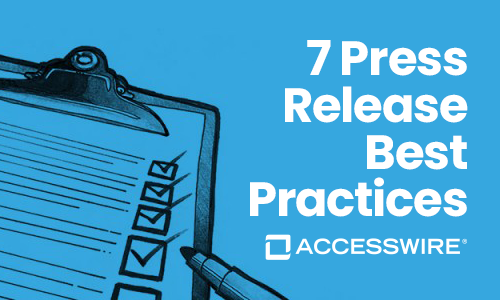A Guide to Data Security and Compliance
As all web-based technologies continue to morph into better, more user-friendly versions, you can ensure that hackers are keeping up with all the latest innovations and upgrades.
It is because of those bad actors and their spyware, malware, and other intrusive, malicious tools that maintaining a company’s data security and compliance is more important than ever.
Not all of us are gifted with the technological acumen it takes to ensure our companies’ data is safe; because of this, we have put together this guide that will explain what data security and compliance is, and why companies should prioritize it.
Understanding the Importance of Data Security
There are many sectors in public, private, non-profit, and/or governmental agencies for which the compliance standards and regulations exist. A useful definition of data security comes from IBM:
“Data security is the practice of protecting digital information from unauthorized access, corruption, or theft throughout its entire lifecycle. It’s a concept that encompasses every aspect of information security from the physical security of hardware and storage devices to administrative and access controls, as well as the logical security of software applications. It also includes organizational policies and procedures.”
Compliance regarding data security is the regulations, standards, and laws that govern how companies, government agencies, and public or private non-profit entities keep their collected data secure, private, and safe from (but not limited to) security system breaches, improper data use, and/or software or hardware damage. Most data protection laws are for consumer data, but compliance best practices and standards are also extended to sensitive personal data submitted by and gathered from employees, medical patients, financial institutions, and others.
To be sure, staying compliant is challenging, especially when new vulnerabilities are identified, which also leads to new regulatory standards that address these ever-changing threats… but keeping data safe is possible; all companies must do is develop a dedicated strategy for addressing the problems and implementing recommended data privacy regulations to solve problems. To reach compliance requirements, businesses must follow all standards and laws that ensure that data management, storage, and transmissions are followed – or they risk suffering the consequences that could prove to be extremely expensive to fix.
Important Compliance Tips
The secret to becoming and maintaining data security compliance begins with one simple thing: knowing which data compliance laws and regulations apply to your business and the kinds of data you collect and store. Try to keep these strategic tips in mind:
- Do you know what kind(s) of data your business collects and/or stores?Whether you are a retail outlet, healthcare company, publicly traded corporation, or not-for-profit organization, you will need to research and identify the privacy laws and regulations and best practices are necessary to keep your collected data safe. Doing this will never be a one-and-done exercise – your compliance experts will need to keep a close eye on the changing laws at least each quarter, and certainly from year to year, no matter your business type.
- Research and implement checks, balances, and the latest tools that will help your business keep its data safe.
Maintaining regulatory compliance should follow a detailed plan of action of your company’s required safeguards and regulations. Sometimes it’s best to hire a third party to manage all the data privacy regulations your company needs to keep in place to keep data security updated and effective. Once you know the kind(s) of data that you will be keeping secure, consider developing a Request for Proposals from various companies that serve your business’s industry.
- With whatever platform your company’s leadership selects, have dedicated tech experts in-house who will be able to run data assessments.
If you choose an off-site third-party data security supplier, you will still want to undergo occasional and/or random testing, to make sure your contractor is on top of things and ensuring cloud security. Any time before and after changes to regulations are announced and enacted is an especially important time to make sure everything is running smoothly on both ends.
Compliance Limits
It’s not unusual for companies to fall into a false sense of security that their collected and stored data is safe when compliance has been achieved. As you might imagine, this is an incredibly dangerous situation for which your in-house and third-party security contractors will need to be ever vigilant.
Glossary of Regulatory Terms and Acronyms
Because every company has different compliance needs, becoming familiar with the most common laws, regulations, and abbreviations is in your business’s best interests. Common compliance regulation laws are put in place to protect sensitive data and sensitive information. The following are examples of the terminology you will run across in your regulatory education.
HIPAA: The Health Insurance Portability and Accountability Act (HIPAA) was designed to protect medical patients and ensure their personal/private information is confidential and requires healthcare providers to ensure digital health when data is being either stored or transmitted. Those who violate HIPAA compliance and privacy rules and regulations can be punished with prison terms of up to 10 years.
GDPR: The General Data Protection Regulation was originally adopted by the European Union, but the U.S. has adopted several of these standards and procedures for any organization. GDPR requirements protect personal data in such a way that bans unauthorized data collection and distribution. The GDPR requires companies to process personal data in a way that helps protect against unauthorized data collection, processing, damage, data loss, and/or destruction. The fines surrounding GDPR failures can be enormous for businesses with annual revenue of €20 million, or 4 percent of their total annual revenue – whichever is higher.
SOX: The Sarbanes-Oxley Act of 2002 (SOX) was signed into law by the Securities and Exchange Commission in the early 2000s in response to financial scandals from such mega-corporations as WorldCom and Enron. Public companies must make truthful and accurate disclosures and provide due diligence and protection to investors and the public regarding how their business is conducted.
FISMA: The Federal Information Security Management Act of 2002 (FISMA) requires all federal agencies, their subcontractors, and their service providers to categorize the data they store. This law also works alongside organizations that operate IT systems for a federal agency. Ongoing risk assessments and data compromise checks are required to maintain compliance of data controls. Public companies, corporate management organizations, and accounting firms perform their due diligence by adhering to the regulations of the SOX Act in conjunction with FISMA standards.
PCI DSS: Otherwise known as the Payment Card Industry Data Security Standard, this law affects businesses that process, store, or transmit credit card information and provides protection for cardholder data that is stored electronically and via paper records. Secure networks must be in place, and access security controls must be implemented and regularly assessed to gauge a company’s security systems and vulnerabilities. Failure to maintain compliance can mean monthly fines of up to $100,000 and/or the removal of the right to accept credit cards as payment for goods or services.
NIST SP 800-53: The National Institute of Standards and Technology Special Publication 800-53 (NIST SP 800-53) provides a standard framework for government agencies to follow, to become compliant with FISMA. Interestingly, although this framework is not a requirement for privately held companies, organizations often follow these guidelines because of its recommended best practices for information systems and data storage.
ISO 27000 Series: ISO 27000 is a set of information technology security standards for organizations wanting to protect financial and/or employee data, IP, and other data assets. Companies who earn these designations find it an attractive selling point for investors, stakeholders, and potential partners.
Soc 2: Pronounced as “sock two,” this is an abbreviation for Service Organization Control 2, which reports on various organizational controls related to security, availability, processing integrity, confidentiality, and/or privacy. The standard for regulating these five issues was formed under the AICPA Trust Services Principles and Criteria and these reports can play an important role in the following:
- Oversight of the organization
- Vendor management programs
- Internal corporate governance and risk management processes
- Regulatory oversight
ADA compliance: This term refers to the Americans with Disabilities Act Standards for Accessible Design, which means that all electronic information and technology (i.e., your website) must be accessible to those with disabilities.
What Comes Next?
Once your company reaches its data security and compliance goals, why not share your news? ACCESSWIRE is ready to help you reach out to targeted media outlets and journalists looking for security and compliance news like yours. To learn more about how we can help spread the word, set up a demo of our press release distribution service by clicking here!
Similar Blog Posts
PRODUCTS
ACCESSWIRE | All Rights Reserved




